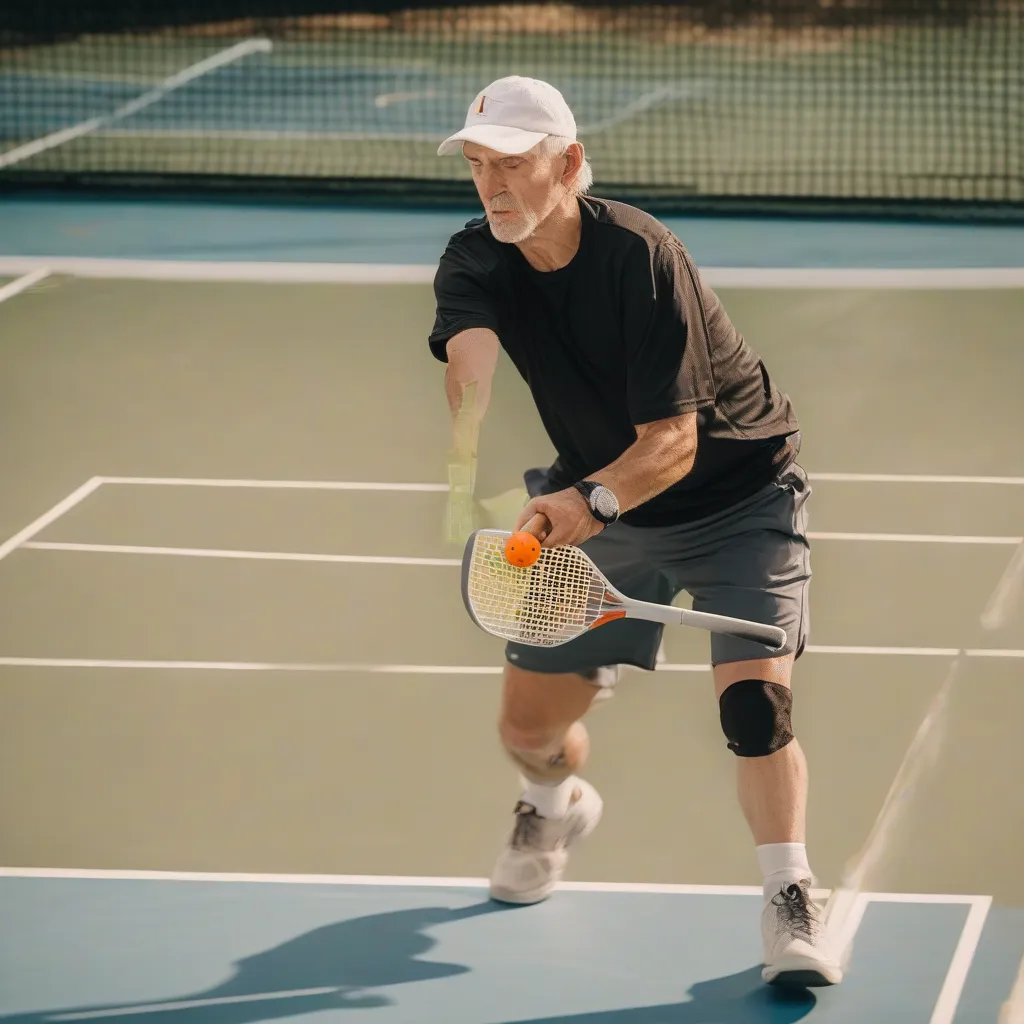Imagine this: you’re down a point, the tension is thick, and your opponents seem to be anticipating your every move. You need to turn the tables, but how? The answer lies in strategic play, applying pressure that forces errors and creates opportunities. This article delves into the art of creating pressure in pickleball, transforming you from a reactive player into a strategic force on the court.
Understanding Pressure in Pickleball
Pressure in pickleball isn’t about brute force; it’s about intelligent, calculated moves that disrupt your opponents’ rhythm and force them into uncomfortable situations. It’s about controlling the pace, placement, and spin of the ball, dictating the flow of the game, and making your opponents play your game, not theirs.
The Elements of Pressure
Several key elements contribute to creating effective pressure:
- Consistent Deep Shots: Deep shots, landing near the baseline, force your opponents back, limiting their attacking options and creating opportunities for you to move forward.
- Targeted Placement: Aiming for weaknesses in your opponents’ court coverage, like the sidelines or the middle, forces them to move quickly and potentially make errors.
- Varying Shot Selection: Mixing up your shots—dinks, drives, lobs—keeps your opponents guessing and prevents them from settling into a comfortable pattern.
- Controlling the Net: Positioning yourself at the non-volley zone line (NVZ) allows you to volley effectively, putting pressure on your opponents and limiting their ability to attack.
- Communication (in Doubles): Clear and concise communication with your partner is crucial for coordinating your movements, covering the court effectively, and applying consistent pressure.
Strategic Play to Create Pressure
Strategic play is about more than just hitting the ball; it’s about thinking ahead, anticipating your opponents’ moves, and executing a plan.
The Third Shot Drop
Mastering the third shot drop is essential for creating pressure. A well-placed drop shot forces your opponents to move forward, opening up the court for your next shot. This can disrupt their rhythm and create opportunities for you to take control of the net. For more insights on serving strategically, explore this article on strategic serving techniques.
Exploiting Weaknesses
Identify and exploit your opponents’ weaknesses. Do they struggle with volleys? Are they slow to react to dinks? Tailor your shots to exploit these weaknesses and create pressure points. You can delve deeper into strategic partnerships in doubles play in this informative article.
Court Positioning and Movement
Strategic court positioning is fundamental to applying pressure. Maintaining a balanced stance at the NVZ line allows you to react quickly and volley effectively. Efficient movement allows you to cover the court, reach shots, and maintain pressure. For a comprehensive understanding of court positioning, check out this article on the importance of pickleball court positioning.
Varying Pace and Spin
Changing the pace and spin of the ball keeps your opponents off balance. A sudden change of pace can disrupt their timing, while adding spin can make the ball behave unpredictably, forcing errors.
The Power of the Dink
The dink is a deceptively powerful tool for creating pressure. Consistent, well-placed dinks force your opponents to stay low, limiting their attacking opportunities and setting you up for a winning shot.
 Creating Pressure with Strategic Pickleball Play
Creating Pressure with Strategic Pickleball Play
Advanced Pressure Tactics
Once you’ve mastered the basics, you can incorporate more advanced tactics to elevate your game.
The Lob
A well-timed lob can be a powerful weapon for creating pressure, especially against opponents who are positioned at the NVZ line. It forces them to retreat, giving you time to advance to the net and take control of the point.
The Erne
An erne, a volley hit before the ball bounces, can be a surprise attack that puts immediate pressure on your opponents. It requires quick reflexes and precise execution, but it can be highly effective in creating opportunities.
Strategic Partnerships in Doubles
In doubles, communication and coordinated movement are essential for creating consistent pressure. Working with your partner to cover the court, anticipate your opponents’ moves, and execute a shared strategy is crucial for success. Discover how to exploit gaps in doubles teams strategically in this helpful article.
Conclusion
Creating pressure in pickleball is about strategic play, intelligent shot selection, and understanding your opponents’ weaknesses. By mastering these techniques, you can dictate the flow of the game, force errors, and elevate your pickleball performance. Remember, consistent practice and strategic thinking are the keys to unlocking your full potential on the court. What are your favorite pressure tactics? Share your thoughts and experiences in the comments below! Explore more pickleball shot placement tactics for winning matches in this comprehensive guide.
- Bond, Payton (Author)
- English (Publication Language)
- Baker, Joe (Author)
- English (Publication Language)
- Anderson, Brian (Author)
- English (Publication Language)
- Carnot, Prem (Author)
- English (Publication Language)
- Palcic, Lisa (Author)
- English (Publication Language)
- Callahan, John (Author)
- English (Publication Language)
- Hall, Dennis (Author)
- English (Publication Language)
- Baker, Mr. Joe (Author)
- English (Publication Language)
- Foster, Blake (Author)
- English (Publication Language)
- Satka, David (Author)
- English (Publication Language)









